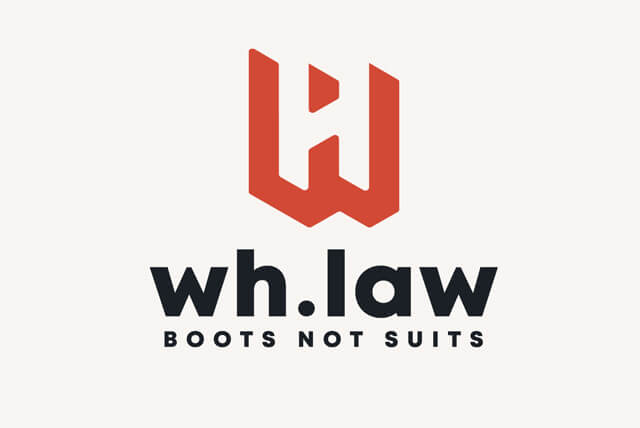
Do Transgender People Have the Same Rights in the Workplace?
In a world that is constantly evolving, the quest for workplace equality is more relevant than ever. The topic of “do transgender people have the same rights in the workplace” and inclusion has become increasingly important, as the transgender community continues to face unique challenges and struggles. This comprehensive guide will delve into the legal protections, challenges, job application process, inclusive practices, addressing discrimination, health insurance, and support networks that are vital for transgender employees. Get ready to explore a fresh perspective on workplace equality for transgender people and learn how to navigate the complexities of the professional landscape.
Key Takeaways
- Title VII of the Civil Rights Act and recent Supreme Court decisions provide legal protections for transgender employees in the workplace.
- Transgender workers face underrepresentation, unemployment, wage inequality, and obstacles to career advancement due to discrimination.
- Employers should create an inclusive environment with respectful language & appropriate policies while providing access to necessary medical care & employee benefits.
Legal Protections for Transgender Employees
Transgender employees often find navigating the professional landscape daunting. However, there are established legal protections that guarantee equal rights for all, preventing gender identity discrimination. Title VII, Supreme Court decisions, and executive orders all provide protection from discrimination based on gender identity in the workplace.
These protections serve as a strong foundation for transgender employees to assert their rights and confidently tackle any workplace issues that may arise.
Title VII and Gender Identity
Title VII, a part of the Civil Rights Act, is a federal law that explicitly bans employment discrimination against members of protected classes, which includes individuals identifying as transgender. Over time, several court decisions and the Department of Justice have interpreted Title VII to include transgender employees, providing them with legal protection against discrimination.
The Supreme Court’s landmark ruling in Bostock v. Clayton County, Georgia, affirmed that employment discrimination based on transgender status does indeed constitute sex discrimination, which is prohibited by Title VII. This legal milestone has significantly strengthened the rights of transgender individuals in the workplace.
Supreme Court Decisions on Workplace Discrimination
The legal landscape for transgender employees has been significantly influenced by Supreme Court rulings. In the Bostock v. Clayton County case, the Court concluded that the term “sex” encompasses both transgender status and sexual orientation. This decision has made it clear that terminating an individual due to their sexual orientation or transgender status violates Title VII’s prohibition of discrimination based on sex.
The ruling has provided a significant legal victory for transgender workers, reinforcing their rights and protections in the workplace.
Executive Orders and Federal Contractors
Executive orders have significantly contributed to the protection of transgender employees’ rights. In 2014, President Obama took an important step to protect LGBT Americans. He issued an Executive Order which:
- Prohibited federal contractors from discriminating based on sexual orientation and gender identity
- Ensured that businesses contracting with the federal government adhere to inclusive practices
- Prevented discrimination based on sexual orientation and gender identity
Consequently, federal contractors are legally obligated to provide equal opportunities and a more inclusive workplace environment for their transgender employees, as part of their federal contract compliance programs.
Challenges Faced by Transgender Workers

Despite the legal protections in place, transgender workers continue to face a myriad of challenges in the workplace. These challenges include:
- Underrepresentation
- Unemployment
- Wage inequality
- Obstacles to career advancement
A deeper examination of specific issues, such as high unemployment rates and wage gaps between cisgender and transgender workers, is key to understanding and addressing these challenges.
Underrepresentation and Unemployment
The transgender community faces higher unemployment rates compared to the general population, with rates ranging from 14% to 30%. This underrepresentation can be attributed to the intersection of race and gender identity, which often results in limited job opportunities and a lack of representation in various industries.
Transgender individuals are especially underrepresented in industries such as technology and low-wage industries like food service and retail.
Wage Inequality
Wage inequality is another pressing challenge for transgender workers. Studies indicate that transgender employees, on average, earn less than cisgender workers in most industries, with the wage gap ranging from approximately 20% to 32%. Discrimination, bias, and limited job opportunities contribute to this wage disparity, which can have significant economic and psychological consequences for transgender individuals.
Obstacles to Career Advancement
Transgender employees also face obstacles to career advancement. Approximately 36% of transgender workers believe that their gender identity could impede their capacity to be promoted. Moreover, 86% of transgender respondents do not observe leaders in their workplace who appear to be similar to them.
These obstacles can create feelings of isolation and exclusion, limiting the professional growth and opportunities for transgender employees.
Navigating the Job Application Process
The job application process can be particularly challenging for transgender individuals. Decisions surrounding the disclosure of gender identity, addressing interview concerns, and evaluating company culture and benefits can have a significant impact on their job search experience.
For transgender individuals to secure employment and build thriving careers, effective navigation of the job application process is imperative.
Disclosure of Gender Identity
Disclosing one’s gender identity during the job application process is a personal decision that depends on the individual’s comfort level and the legal protections in place. While it is not necessary to disclose gender identity during the job application process, it may be beneficial to do so if the individual feels comfortable and it is pertinent to the job.
Employers should cultivate an inclusive and supportive environment where transgender individuals feel secure to disclose their employee’s gender identity if they choose to do so.
Interview Concerns and Strategies
Transgender job applicants may face unique challenges during job interviews, including discrimination, hostile coworkers, unprepared employers, and pressure to adhere to gender norms. To address these concerns, transgender individuals can research the company, prepare for common questions, highlight their qualifications, educate the interviewer, and seek support from LGBTQ+ organizations.
These strategies can help transgender applicants navigate the interview process confidently and effectively.
Evaluating Company Culture and Benefits
Evaluating the inclusivity of a company’s culture and benefits is crucial for transgender job applicants. Indicators of a transgender-inclusive company culture may include diversity and inclusion initiatives, the presence of employee resource groups, and the company’s public support for LGBTQ+ rights.
Additionally, transgender applicants should be aware of specific benefits, such as gender-neutral bathrooms and coverage for hormone replacement therapy, that may be important to them based on their person’s gender identity.
Inclusive Workplace Practices
An inclusive and supportive workplace environment is pivotal to the well-being and success of transgender employees. Inclusive workplace practices, such as using correct pronouns and respectful language, providing restroom access, and implementing non-discriminatory dress codes, can significantly impact the overall work experience for transgender individuals. By adopting these practices, employers can promote a more equitable and inclusive workplace.
Pronouns and Respectful Language
Using appropriate pronouns and language is a vital aspect of fostering an inclusive workplace for transgender employees. Best practices include:
- Incorporating neutral language
- Encouraging pronoun sharing
- Leading by example
- Adding pronouns to email signatures or display names
- Educating oneself and others
By implementing these practices, employers and colleagues alike can contribute to a respectful and inclusive environment for transgender workers.
Restroom Access and Policies
Providing restroom access that accommodates the needs of transgender employees is another essential component of an inclusive workplace. OSHA recommends that employers allow employees to access the restroom that is consistent with their gender identity.
By implementing inclusive restroom policies, employers can help ensure the comfort and safety of all employees, regardless of their gender identity.
Dress Codes and Gender Expression
Dress codes and gender expression policies can significantly impact the workplace experience for transgender employees. To ensure compliance with Title VII, employers must avoid dress codes and grooming policies that enforce gender stereotypes or require employees to conform to a gender identity that does not align with their own.
By implementing inclusive dress code policies, employers can promote a more equitable and supportive work environment for transgender employees.
Addressing Discrimination and Harassment
Ensuring a safe and inclusive workplace for transgender employees necessitates addressing discrimination and harassment. This process involves identifying incidents of discrimination and harassment, following reporting procedures, and seeking legal recourse and support when necessary.
Taking proactive steps to address these issues can help create a more equitable and supportive work environment for all employees.
Identifying Discrimination and Harassment
Recognizing the signs of workplace discrimination and harassment is the first step in addressing these issues. Indicators may include:
- Harassment based on sexual orientation or gender identity
- Creating an intimidating work atmosphere
- Refusing to hire or promote transgender individuals
- Denying access to appropriate restroom facilities.
By identifying these signs, employees can take appropriate action to address discrimination and harassment in the workplace.
Reporting Procedures and Resources
If a transgender employee experiences discrimination or harassment, it is important to follow the appropriate reporting procedures. This may involve filing a complaint with the Equal Employment Opportunity Commission (EEOC) or the relevant state Human Rights Commission, as well as reporting incidents to the company’s human resources department or following internal reporting procedures.
Resources such as the Transgender Law Center, EEOC, Lambda Legal, and the Department of Labor’s Civil Rights Center can provide assistance and guidance.
Legal Recourse and Support
In addition to reporting procedures, transgender employees who have experienced discrimination or harassment may need to seek legal recourse and support. This can include:
- Consulting a qualified attorney
- Filing a complaint with the relevant agency
- Assembling evidence
- Pursuing litigation if necessary
Legal resources such as the Transgender Legal Defense & Education Fund and Lambda Legal can provide valuable assistance in navigating the legal process.
Health Insurance and Employee Benefits
The overall well-being of transgender employees greatly depends on health insurance and employee benefits. It is essential for these benefits to cover transition-related care, and for employees to navigate insurance policies and exclusions while advocating for comprehensive coverage.
By understanding their rights and the available resources, transgender employees can ensure they receive the support and care they need.
Coverage for Transition-Related Care
Transition-related care is an essential aspect of health insurance coverage for transgender individuals. Federal law prohibits discrimination against insureds due to their transgender status by most public and private health plans. This results in essential transition-related care being covered..
This coverage is crucial for transgender individuals to access necessary medical care and services.
Navigating Insurance Policies and Exclusions
Understanding and navigating insurance policies and exclusions can be challenging for transgender employees. It is important for individuals to be aware of their rights and the specific provisions of their insurance plan, as well as any exclusions or limitations that may impact their access to necessary care.
By staying informed and advocating for their needs, transgender employees can ensure they receive the coverage they require.
Other Employee Benefits and Protections
In addition to health insurance, transgender employees should be aware of other employee benefits and protections available to them. The Family and Medical Leave Act (FMLA) may provide unpaid leave for transgender employees to recover from a serious health condition, including gender dysphoria and procedures related to gender transition.
However, parental leave policies may not always be equally accessible to transgender employees, as they are often based on the definition of what constitutes a “family”. It is essential for employees to be familiar with their rights and the available resources to ensure they receive the support they need.
Unions and Additional Support
For transgender employees dealing with workplace challenges, unions, legal assistance, and community support networks can offer invaluable support and resources. By engaging with these support systems, transgender workers can access valuable resources, advice, and advocacy that can help them navigate the complexities of the professional landscape and promote a more inclusive and equitable workplace.
Union Representation and Advocacy
Unions can offer significant support and resources for transgender employees, such as education and training programs, advocacy for equal pay and policy changes, and legal protection against employment discrimination. Union representation can provide additional protections beyond those provided by law and can be a valuable asset for transgender workers seeking to address workplace issues and advance in their careers.
Legal Assistance and Resources
Transgender employees may require legal assistance to address workplace discrimination or to understand insurance policies and exclusions. Organizations such as CRLA’s LGBT legal assistance, NCTE’s Trans Legal Services Network, Human Rights Campaign (HRC), Lambda Legal, and Immigration Equality provide legal aid to transgender individuals facing workplace discrimination.
These resources can offer valuable information and support to help navigate the legal process.
Community and Online Support Networks
Community and online support networks play a vital role in providing resources, support, and advocacy for transgender individuals. These networks include:
- Online forums
- Support groups
- Other resources that offer a secure and supportive environment for transgender individuals to interact with one another and share experiences.
By engaging with these support networks, transgender employees can access valuable resources and connections that can help them succeed in the workplace and overcome the challenges they may face.
Real World Example
When Taylor, a transgender woman, was repeatedly misgendered at her new job, she wondered what protections she had and who could advise her. Unsure where to turn, she searched online for a labor lawyer with experience assisting transgender employees. She got in touch with the intake team at our WH Law office in Jonesboro, AR.
Taylor called and scheduled a meeting with one of our labor law attorneys. She explained how her manager and coworkers refused to use her correct name and female pronouns despite repeated requests. Taylor often felt excluded from work events and feared she’d never advance there as a transgender woman.
Our team quickly validated Taylor’s concerns, calling the treatment harassment and potential discrimination. we explained that under Title VII, employers cannot discriminate based on gender identity or sexual orientation. This meant Taylor’s workplace rights were clearly violated by not acknowledging her gender.
As Taylor described her experiences, we documented details to build a case. We then offered to send a letter educating Taylor’s employer about legal obligations toward transgender staff. If needed, our team could also file complaints with the EEOC and provide ongoing legal counsel.
In the meantime, Sofia suggested Taylor join LGBTQ employee networks for additional support. In the end, we assured Taylor that legal remedies existed to hold discriminatory workplaces accountable. Taylor felt empowered and hopeful after the meeting, now aware of her workplace rights.
Summary
In conclusion, transgender employees face unique challenges and complexities in the workplace. However, with the support of legal protections, inclusive workplace practices, and community resources, they can navigate these challenges and thrive in their careers. By understanding their rights, advocating for themselves, and accessing available resources, transgender individuals can help create a more equitable and inclusive work environment for everyone.
Frequently Asked Questions
Do you have the right to work regardless of gender?
Under Title VII of the Civil Rights Act of 1964, employers are not allowed to discriminate in the employment of an individual because of their gender. Furthermore, Title VII also protects individuals from discrimination based on gender identity or sexual orientation. As such, everyone has the right to work regardless of gender.
How might an employer support employees who are transgender?
Create gender-neutral bathrooms and dress codes, update corporate policies to use inclusive language, modernize benefits policies, create inclusive physical workspaces, and implement transgender rights training to support employees who are transgender.
What is the federal employee transgender policy?
The federal employee transgender policy prohibits discrimination on the basis of gender identity, allows for individuals to access the military in their self-identified gender and provides employees with the right to be addressed by their name and pronoun corresponding to their gender identity. Additionally, the Executive Order on Diversity, Equity, Inclusion and Accessibility in the Federal Workforce ensures that each employee should be able to openly express their sexual orientation, gender identity, and gender expression without fear of discrimination.
Can my employer force me to use gender pronouns?
Employers should not force employees to disclose their pronouns; such a mandate undermines the freedom of the individual to choose how they want to be addressed. It is essential that pronoun disclosure remains an individual choice.
What legal protections are available for transgender employees?
Title VII, Supreme Court decisions, and executive orders all provide protection from discrimination based on gender identity in the workplace, as do federal contract compliance programs, ensuring that contractors adhere to these protections.





